America’s Largest: Wrangell-St. Elias National Park and Preserve
660 Million times the size of the smallest national park unit, Wrangell-St. Elias National Park and Preserve in Alaska encompasses 13.2 million acres, including some of the highest mountains and largest glaciers in the United States.
When talking to the park ranger, he thought he’d stump us by asking what the smallest national park unit was. But we knew… that’s Thaddeus Kosciuszko National Memorial – a tiny .02 acre site in Philadelphia, Pennsylvania. (See our blog: Size Doesn’t Matter!)
About Wrangell-St. Elias National Park and Preserve
It is hard to fathom just how big Wrangell-St. Elias National Park and Preserve is. Rangers will tell you it is 2 times the size of Yellowstone National Park, or as big as Yellowstone and Yosemite National Parks plus the country of Switzerland. There are four mountain ranges in the park and some of the highest peaks in North America including Mount Wrangell (14,163 feet) – an active volcano – plus Mount Blackburn (16,390 feet) and Mount Sanford (16,327 feet).
Between Wrangell-St. Elias and neighboring Kluane National Park and Reserve in Canada there are 10 of the 15 highest mountains in North America and 3 of the largest glaciers, one over 2000 feet deep. That’s 2 times the height of the Eiffel Tower!
60% of Alaska’s glaciers are in Wrangell-St. Elias National Park and Preserve; in fact, 34.8% of the park is covered by glaciers. The longest is 53 miles. The park also includes the largest piedmont glacier in North America – Malaspina Glacier – the size of Rhode Island!
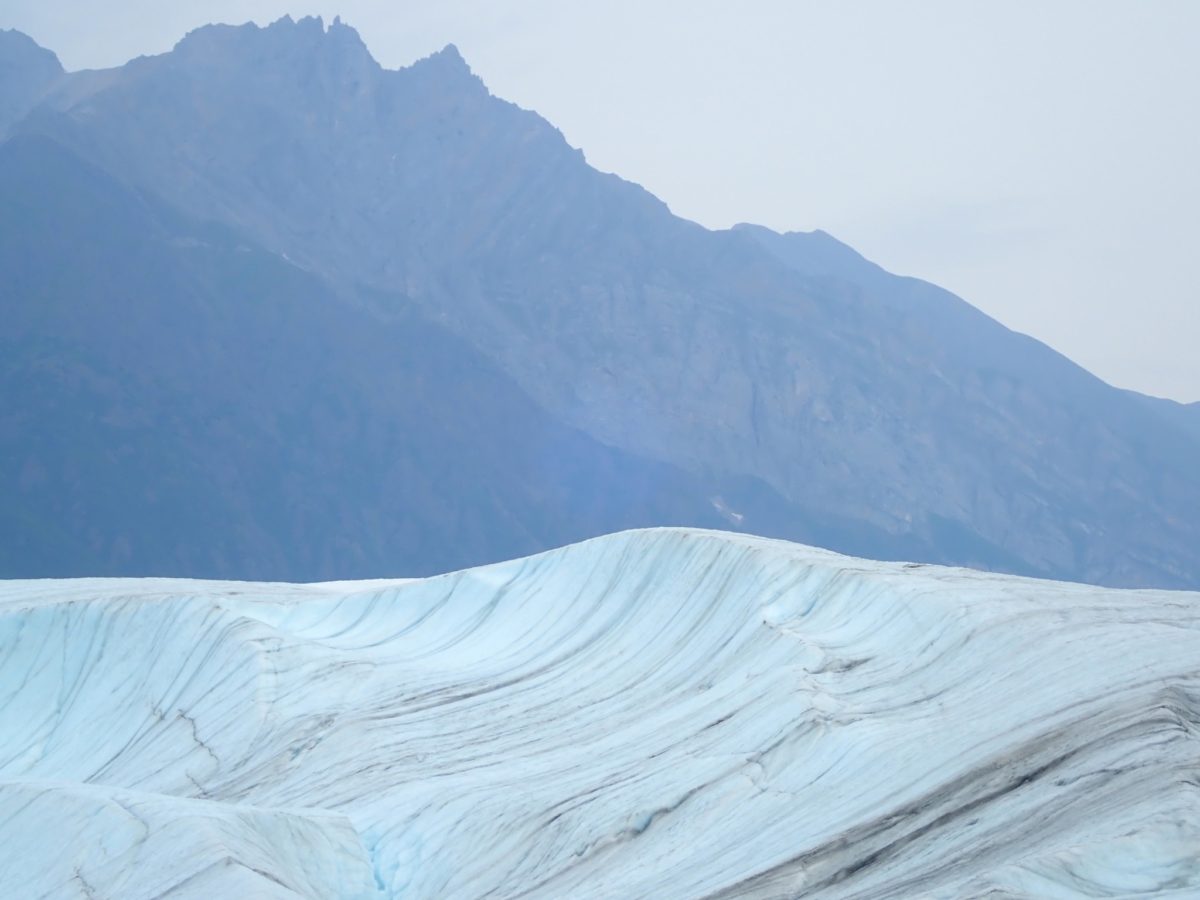
But it is important to know that Wrangell-St. Elias National Park and Preserve is not just mountains and glaciers; it also preserves important cultural history of the native Alaskans as well as Alaska’s copper mining heritage. You will learn about this at the visitor center and experience it if you visit Kennecott Mines National Historic Landmark in the park.
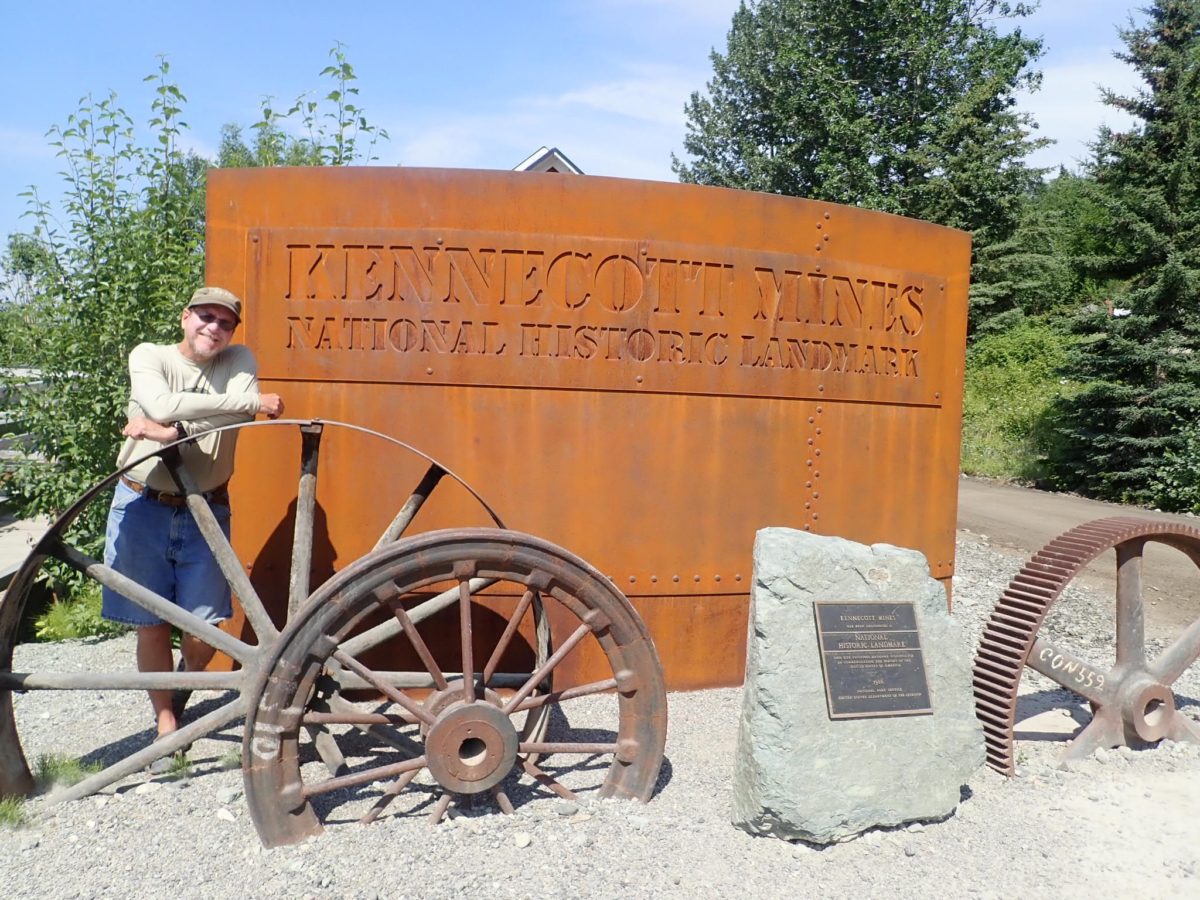
Visiting Wrangell-St. Elias National Park and Preserve
The park headquarters and visitor center is near Copper Center on the road from Valdez to Fairbanks, 10 miles south of the town of Glennallen. You will drive through there if you are coming from Anchorage.
The ranger said they get about 85,000 visitors per year, but most don’t realize that this visitor center is not actually in the park. People who only stop here and get a stamp really don’t even step into Wrangell-St. Elias.
If you really want to visit Wrangell-St. Elias National Park and Preserve, it will take a bit more effort. There aren’t many ways in and there aren’t many services. The options: flight seeing; flying in and hiking/camping in the backcountry; backpacking; river rafting/floating; or driving into the park on one of the two access roads.
Road Access to Wrangell-St. Elias National Park and Preserve
From the north you can visit a seasonal Ranger Station at Slana and then drive a 42 mile one way unpaved road to Nabesna. There is some camping along the way, but not much else.
From the east you can take the Egerton Highway to Chitna and than take the McCarthy Road (60 miles one way). It too is unpaved and not regularly maintained. We were lucky when we went. They had just graded the road in preparation for McCarthy’s annual July 4th celebrations, so the road was pretty good. But they do warn folks about the road conditions and recommend that large RVs not traverse it. Some car rental companies may also forbid you to drive on unpaved roads, so be sure to check this before you go. There may be tour shuttles operating from Chitna, so that’s an option.
Wrangell-St. Elias Visitor Center
We started our visit at the Wrangell-St. Elias Visitor Center. It really is worth a couple hours of your time, or perhaps longer if you want to watch all the movies about the park, culture and copper mining history. They are really good, as are the exhibits in the visitor center. We especially enjoyed the large relief map of the park. This shows the mountains and glaciers, and really gives a good overview.
Take a short hike for amazing mountain views. On a clear day you can see the snowcapped mountains off in the distance. It is funny how Mount Drum – only 12,010 feet – looks so much higher than Mount Wrangell, even though it is over 2,000 feet taller!
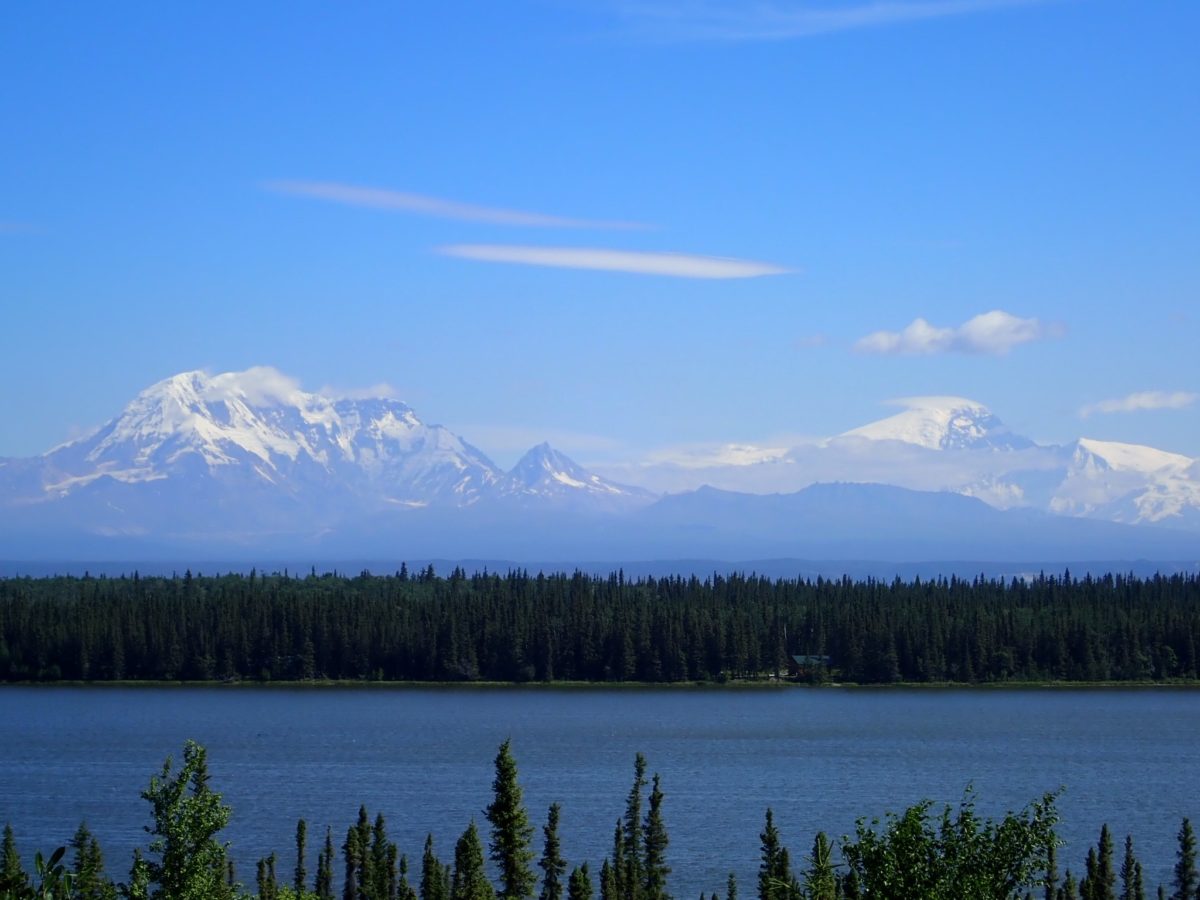
If you want to stretch your legs a little more, you can continue your hike to include a short portion of the Valdez Trail. This is the only remaining section of the historic trail used by gold miners as they made their way north from Valdez to the gold fields. The trail went from Valdez to Fairbanks with roadhouses every 20 miles. (Three are still in operation. We visited Meiers Roadhouse at mile 170 – good food, cold beer and lots of history in their small free museum.)
McCarthy Road
Most visitors to the park will start at Chitna and drive in via the McCarthy Road. Keep an eye out for wildlife and try not to run over all the bunnies. When we drove along, we must have seen at least 100; some sitting right in the middle of the road.
The McCarthy Road follows the old train track that had been built in 1911 to transport the ore from the Kennecott mine to market. (Even today, old rail spikes may emerge on the road after a rain. Not good for your tires, so be watchful.)
En route you will pass over a one lane railroad bridge, high above the river gorge. If you are not good with heights, you might not enjoy this one! There is also a stop where you can take a look at an old railway trestle. It was built in 8 days in January at minus 67 degrees F. A guy we talked to there laughingly said it would take 8 years (or even longer) to build something like this today!!!
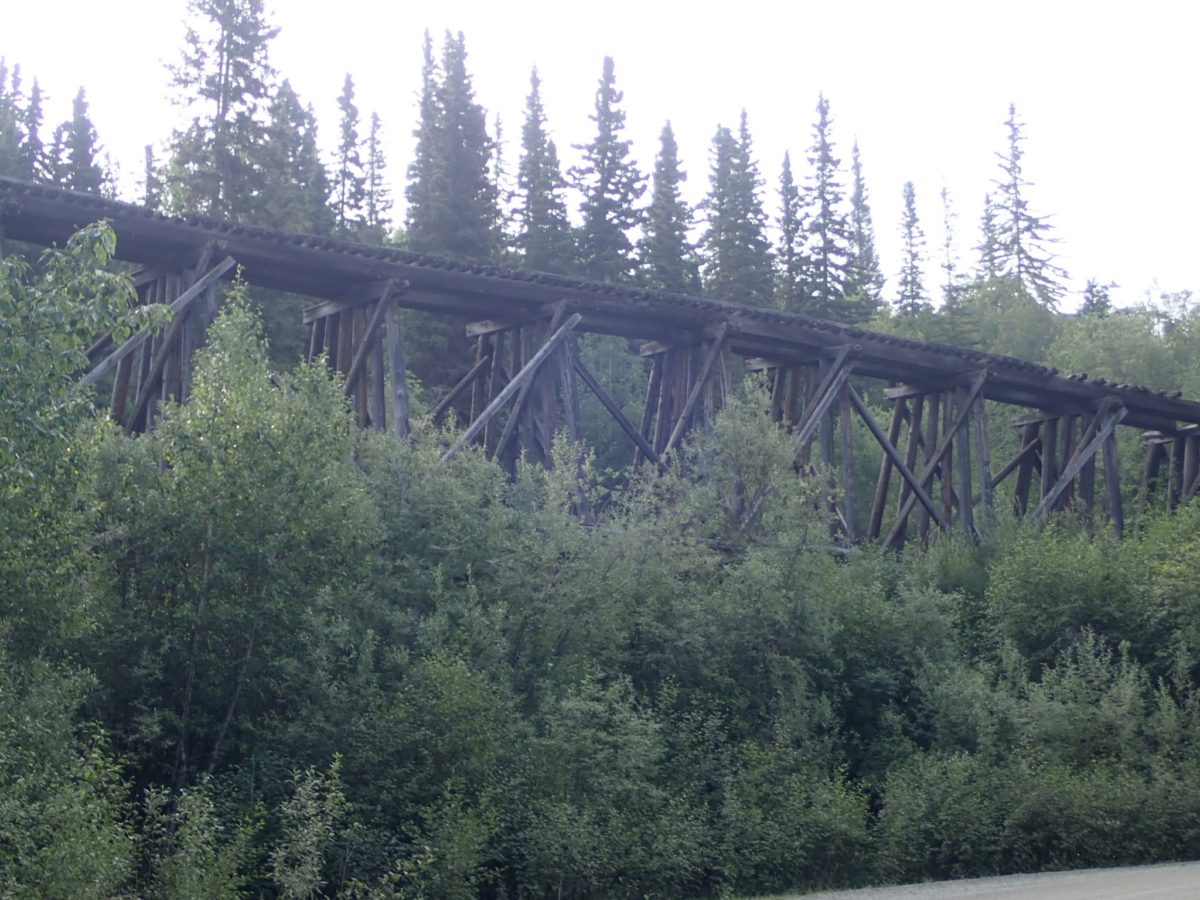
As you drive along, you will go in and out of private land. Unlike many national park units there are several areas that are still privately held within the park. There is also subsistence hunting and fishing allowed. When the salmon are running, you will be able to see fish wheels in operation on the Copper River.
McCarthy
This gravel road ends short of McCarthy. There is a small campground there and a few paid parking lots. Unless you want to pay a large fee to cross the only bridge (privately held), you will have to park your car and carry your stuff over a pedestrian bridge.
When we walked over the bridge, there were icebergs floating in the river upstream. From there we walked to McCarthy. It is only about a half mile, but you can pick up a shuttle. They run from the bridge to McCarthy and Kennecott.
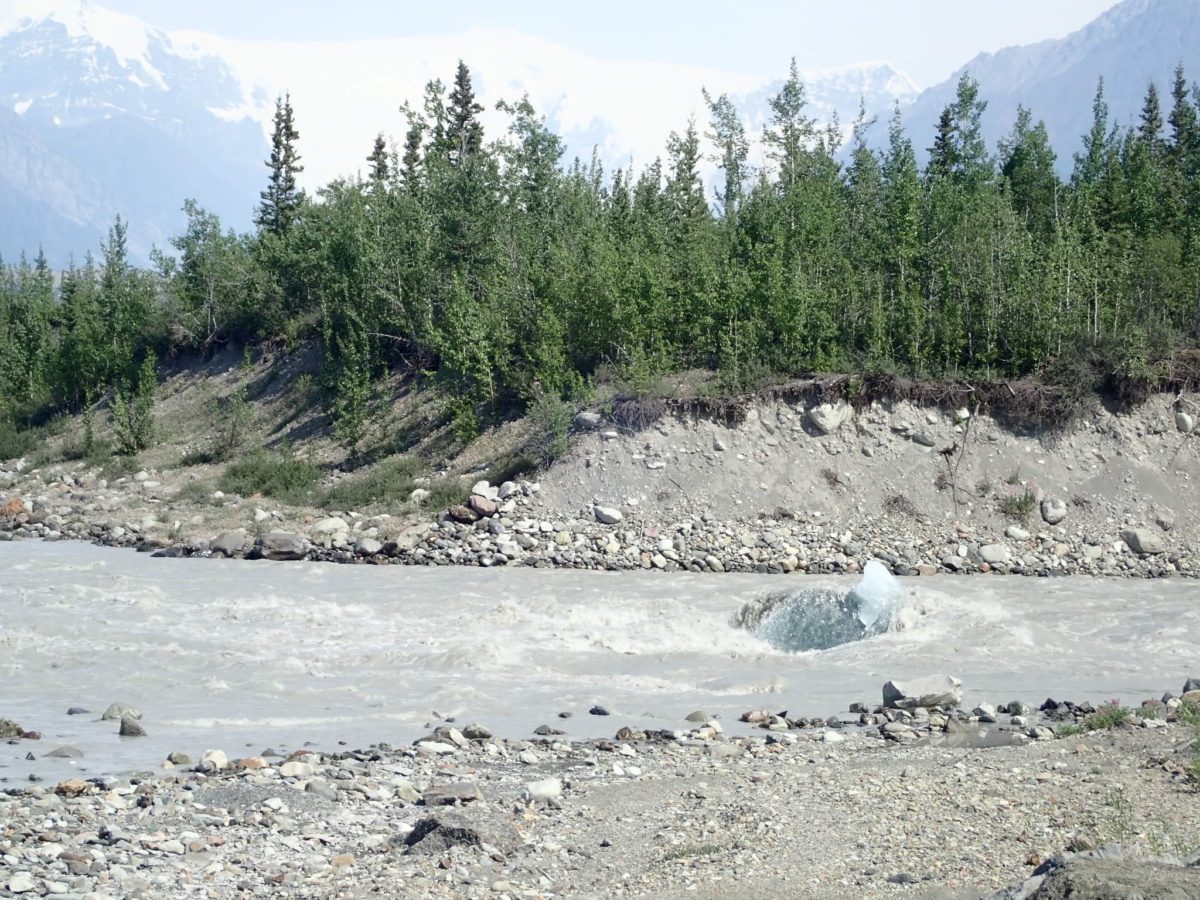
McCarthy is an interesting little place. There is a good museum full of history from the mining era and a couple cute places to eat. McCarthy was a bustling town when the Kennecott copper mine was in operation – that was the closest place to the mine that sold alcohol!
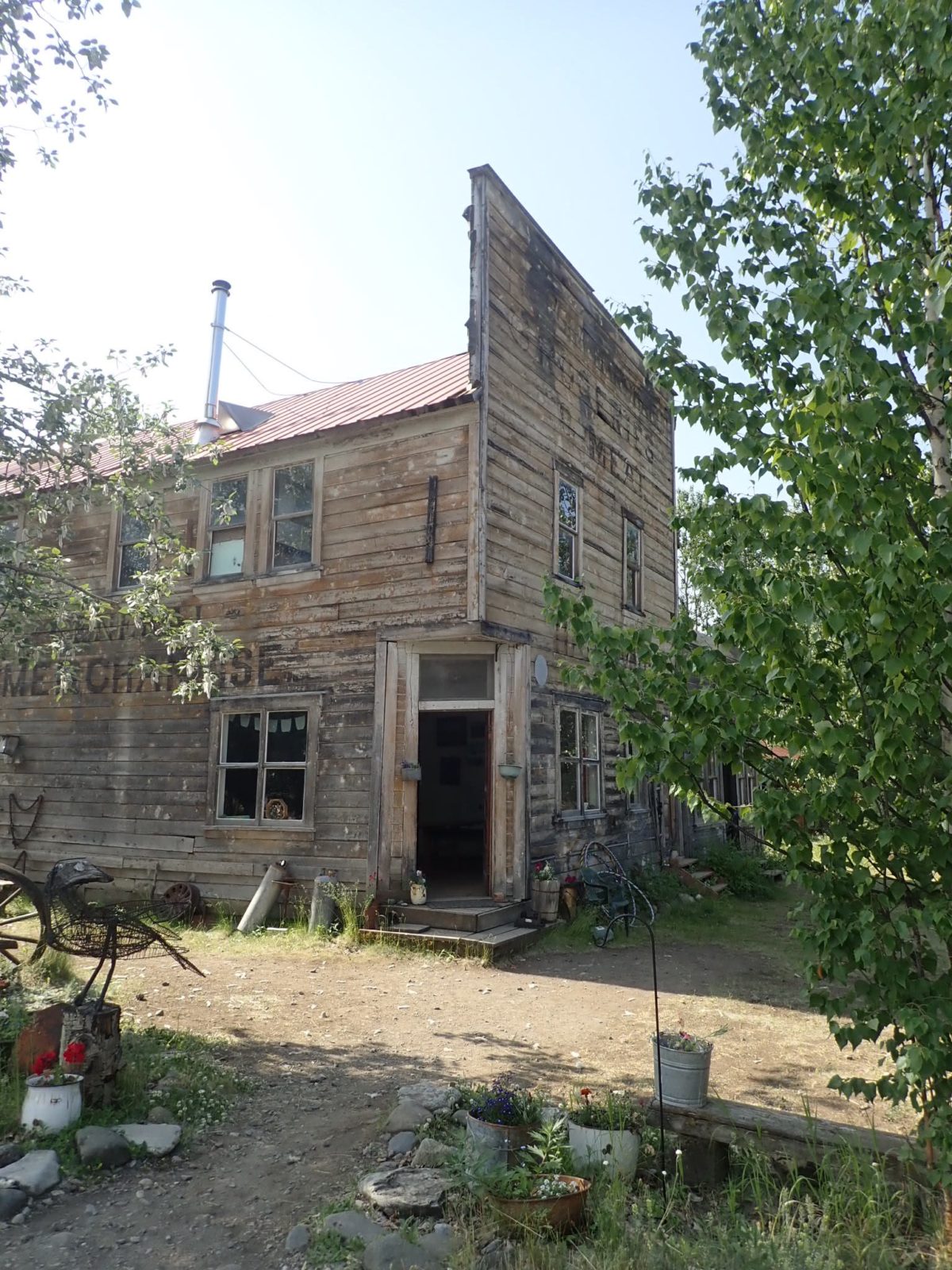
Kennecott
From McCarthy it is another five miles to the historic copper mining town of Kennecott. That’s the end of the road. One resident of Kennecott described it as the “world’s largest cul-de-sac”.
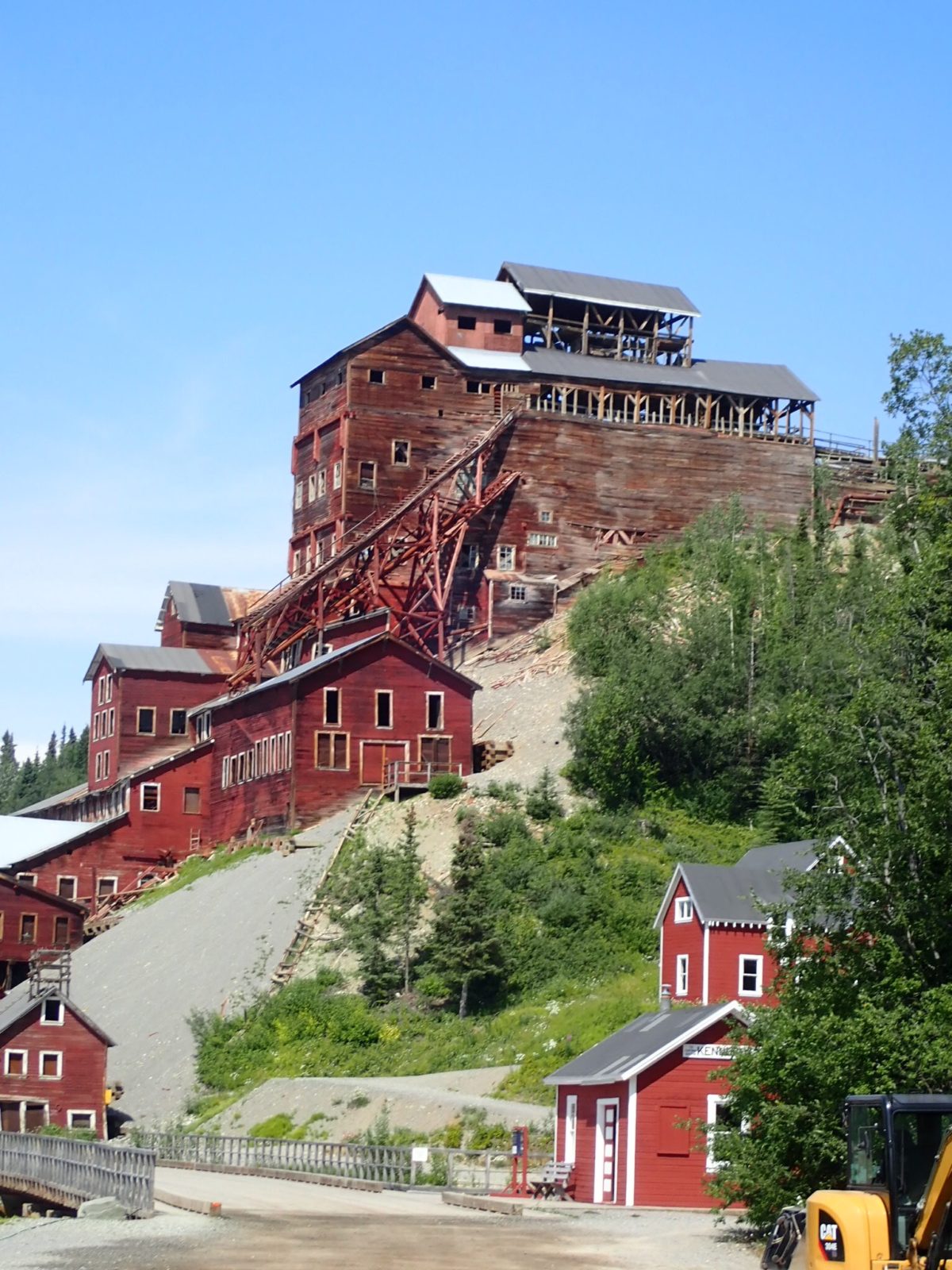
This is the site of the Kennecott copper mine and mill. At its peak over 600 people lived and worked here. It was a thriving town with a school and hospital. The mine operated until 1938, extracting over $200 million dollars in copper and gold.
Today it is the Kennecott Mines National Historic Landmark, preserving the old mill and many of the buildings – dormitories, private homes, manager’s office, post office and more. In fact, Kennecott Lodge is located in one of the old buildings, lovingly restored.
You can stay at the lodge and take your meals there, or go to the food truck at Kennecott. There is a seasonal ranger station in Kennecott and the town is a jumping off station for backcountry trips, ice climbing, glacier hikes and Kennecott mine tours.
Glacier Hikes
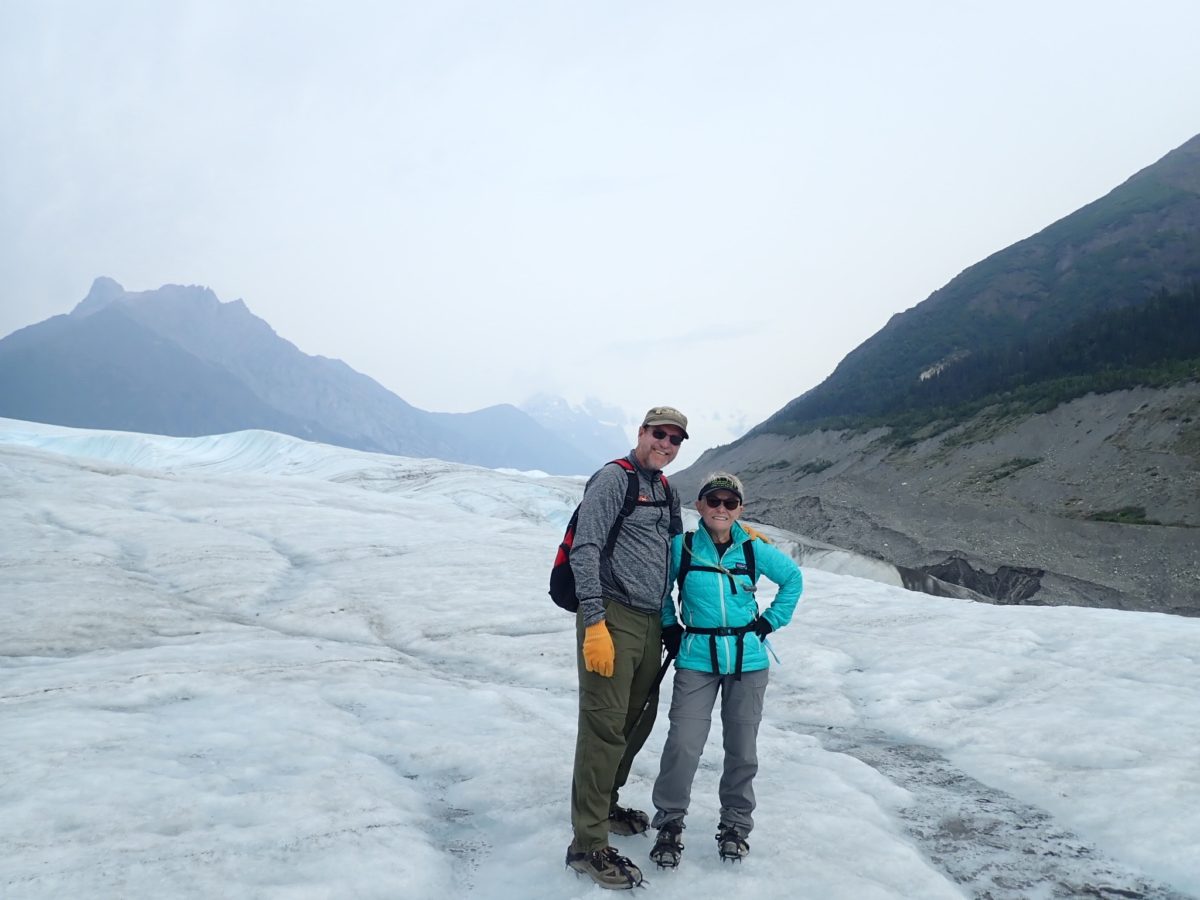
A visit would not be complete without a hike on the glacier. That’s a great way to really experience the park, since such a big part of Wrangell-St. Elias National Park and Preserve is glaciers.
From Kennecott you will see both the Kennecott Glacier and the Root Glacier. Half or full day guided hikes take you out on the Root Glacier. Although you can venture out on your own, you won’t want to do this without crampons. There were folks out there in tennis shoes, but it really isn’t safe.
To get to the edge of the glacier, you have to hike about 2.5 miles from Kennecott. Then you don your crampons and climb out on the ice field. The guided hikes provide these and the guide will show you some of the unique features of the glacier.
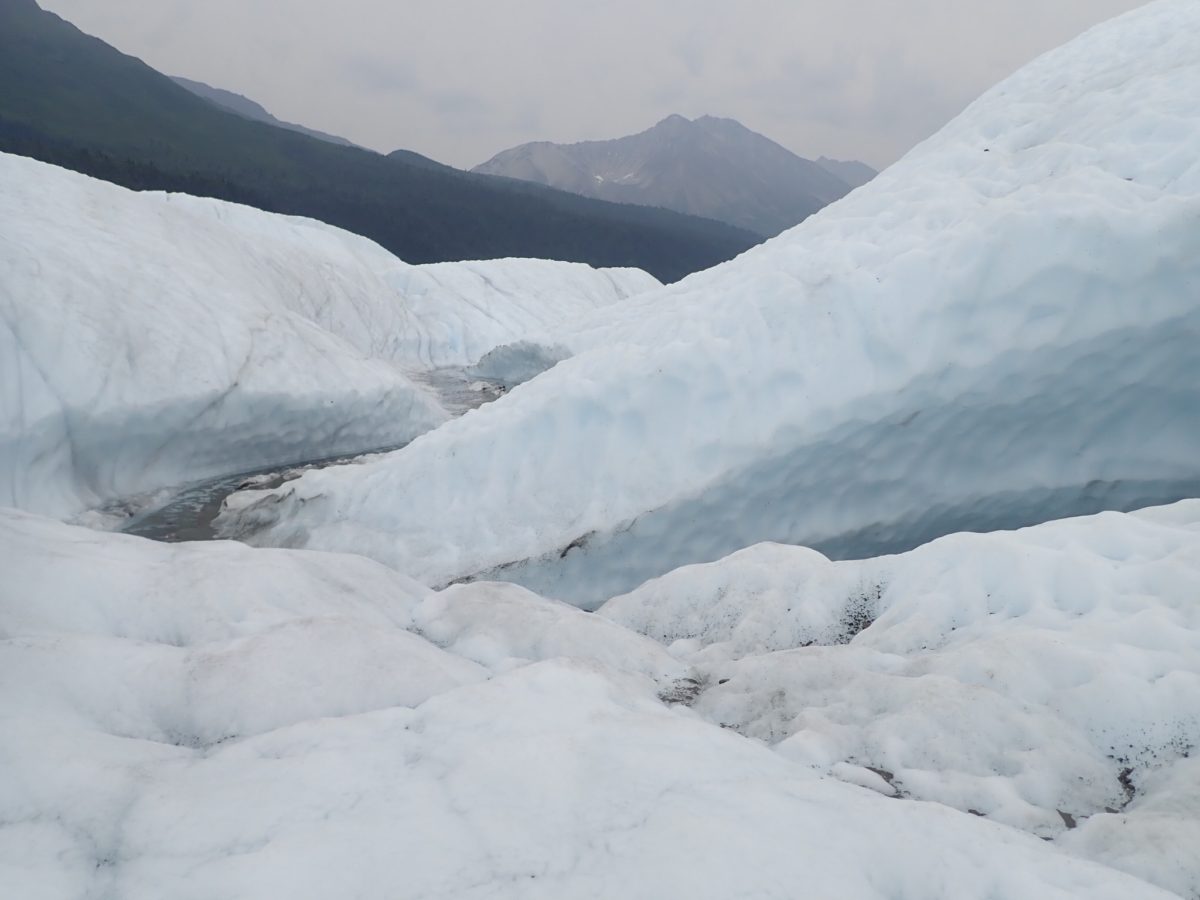
What looked flat from town is not flat at all. There are huge cliffs (a favorite for ice-climbers), crevices, rushing rivers of melt water and “moulins” – deep holes in the ice filled with water. Our guide said that these can be 150-250 feet of ice cold water. If you fall in, you’ll be gone. We were especially careful around these!
Nothing lives on this glacier – no ice worms here – but we were surprised that the glacier was really alive … everywhere there were little streams and waterfalls. We even heard it crack as the ice shifted. It was also really different than we expected. A large part of it was moraine where the ice is covered by a 6-8 inch layer of rocks. What looked like rock was in fact glacier and if you looked at the edges, you could see the ice beneath. It looked like black glass.
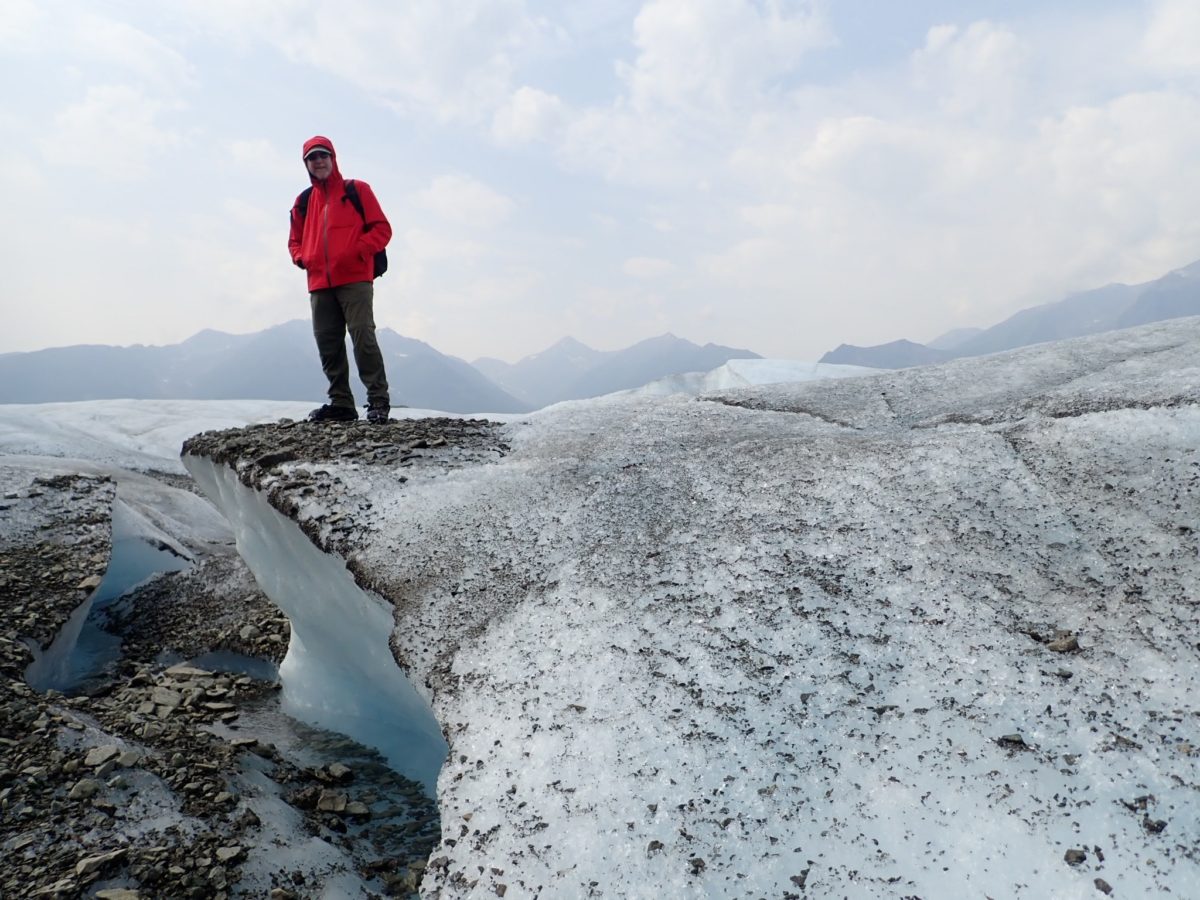
Another really interesting thing was the “stripes” across the ice – in places, almost looking like tire tracks. It was hard not to take hundreds of pictures of all the interesting formations and colors!
Kennecott Mine Tours
Another big aspect of Wrangell-St. Elias National Park and Preserve is mining history. The National Park Service has restored many of the original buildings in Kennecott and filled them with interesting exhibits. You can do a self-guided tour, and go in and out of many of the old buildings. You can also walk around the outside of the old mine building.
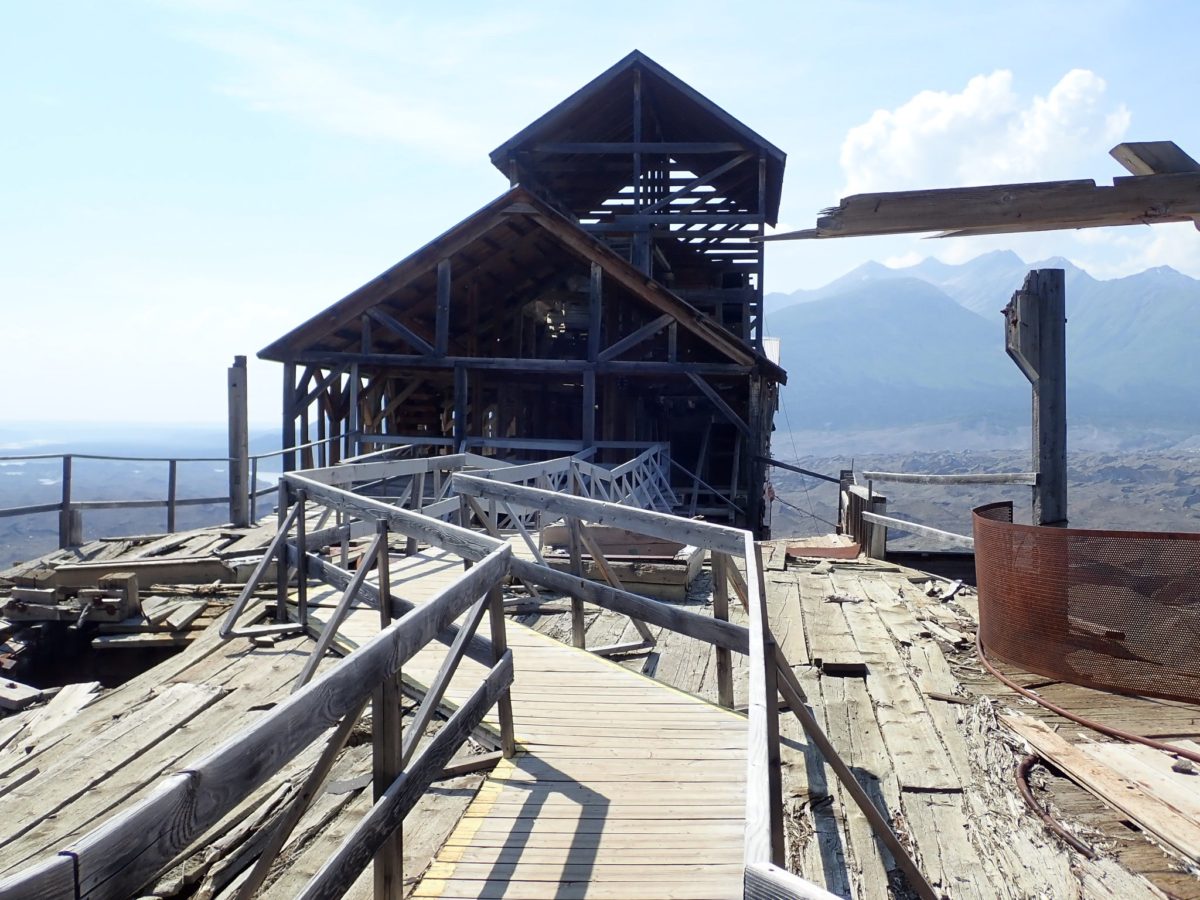
If you want to go inside the mine building, you need to take a tour. It’s only a couple hours and it is really good. It gives you more of an in-depth interpretation of what took place during the mining years. You start at the top of the building and then walk down through the levels… from where the ore came in, through crushing, sorting and bagging.
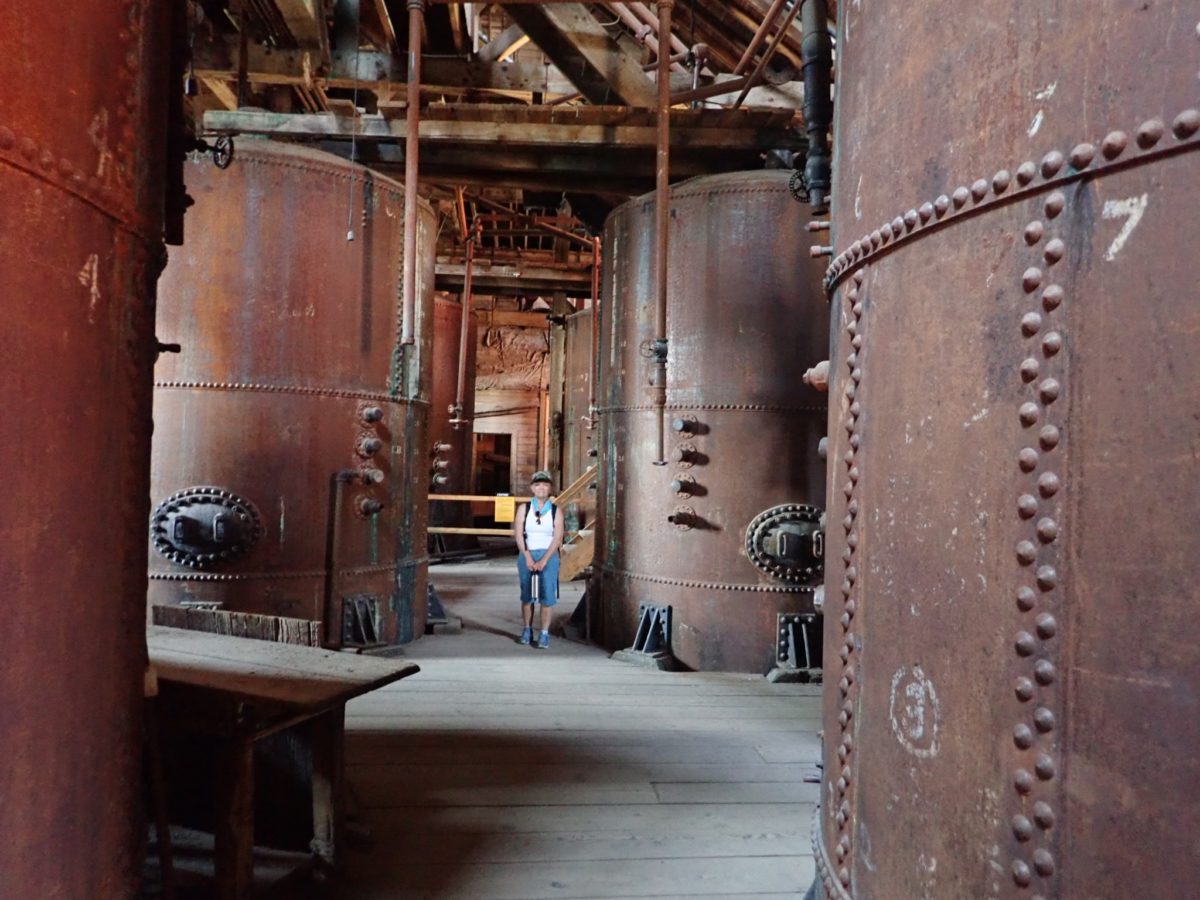
You also go into the power plant. The boilers are huge. It was amazing to think about how all those huge pieces of equipment were transported from as far away as Erie Pennsylvania to Kennecott.
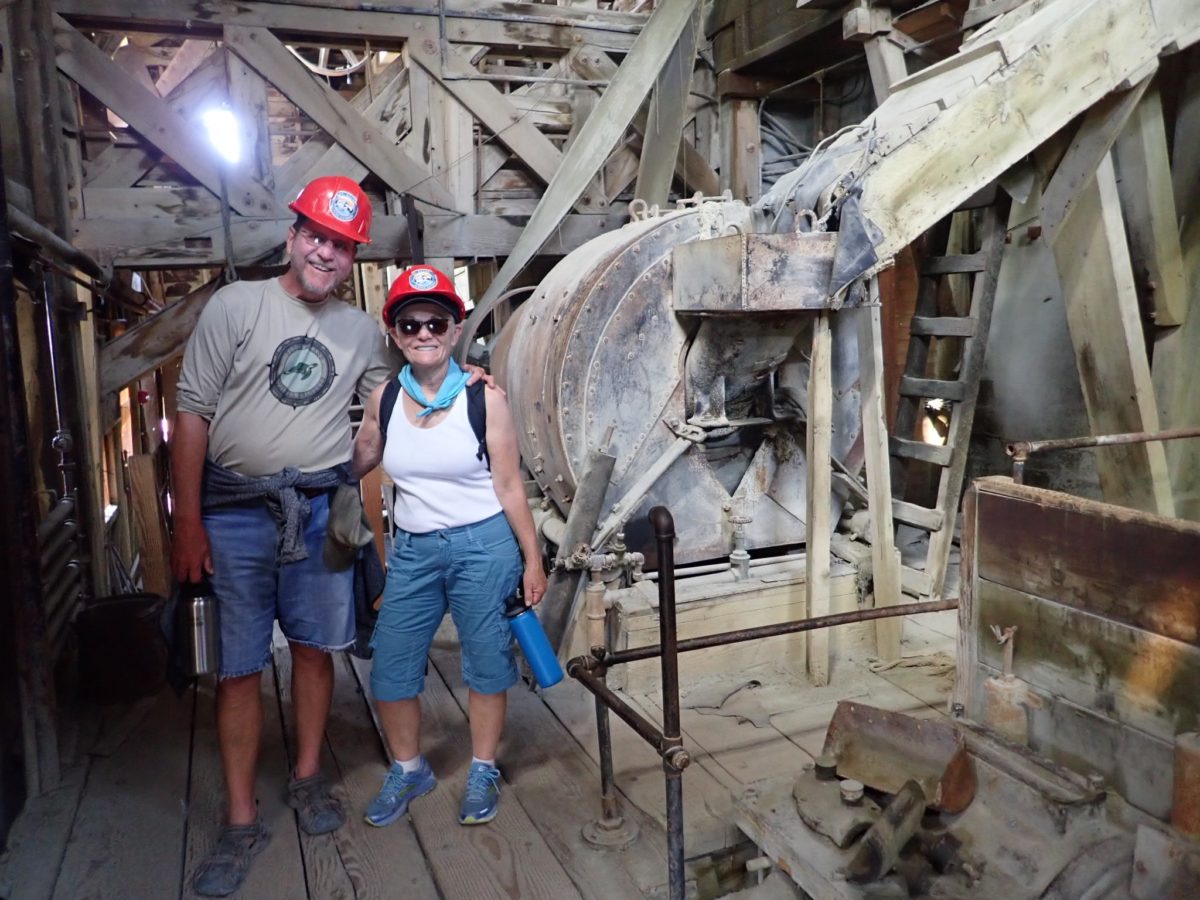
The best thing is that everything has been left just as it was when the mine was closed in 1938. It is like a capsule in time. The National Park Service is leaving everything as is – only fixing things so that it is structurally safe.
Hint: If you decide to do the mine tour, be prepared for a couple mile walk uphill and then down stairs and small walkways. It is not ADA accessible.
If you have time and are up to a hike, you can go up to the old mines at the top of the mountain. Not for the timid, these hikes have a pretty significant elevation gain. You’ll want to plan a full day for each, or more. There is backcountry camping if you are so inclined.
Whatever you decide to do at Wrangell-St. Elias National Park and Preserve, you will have only scratched the surface of this immense and beautiful park. If you are like us, you’ll vow to come back again.
#FindYourPark
#SeeAmericaFirst
Need Help Planning Your Visits?
If you would like to explore this or other National Park Units, but need a bit help in the planning, please give us a call at (480) 609-3978. We are happy to offer customized trip planning.
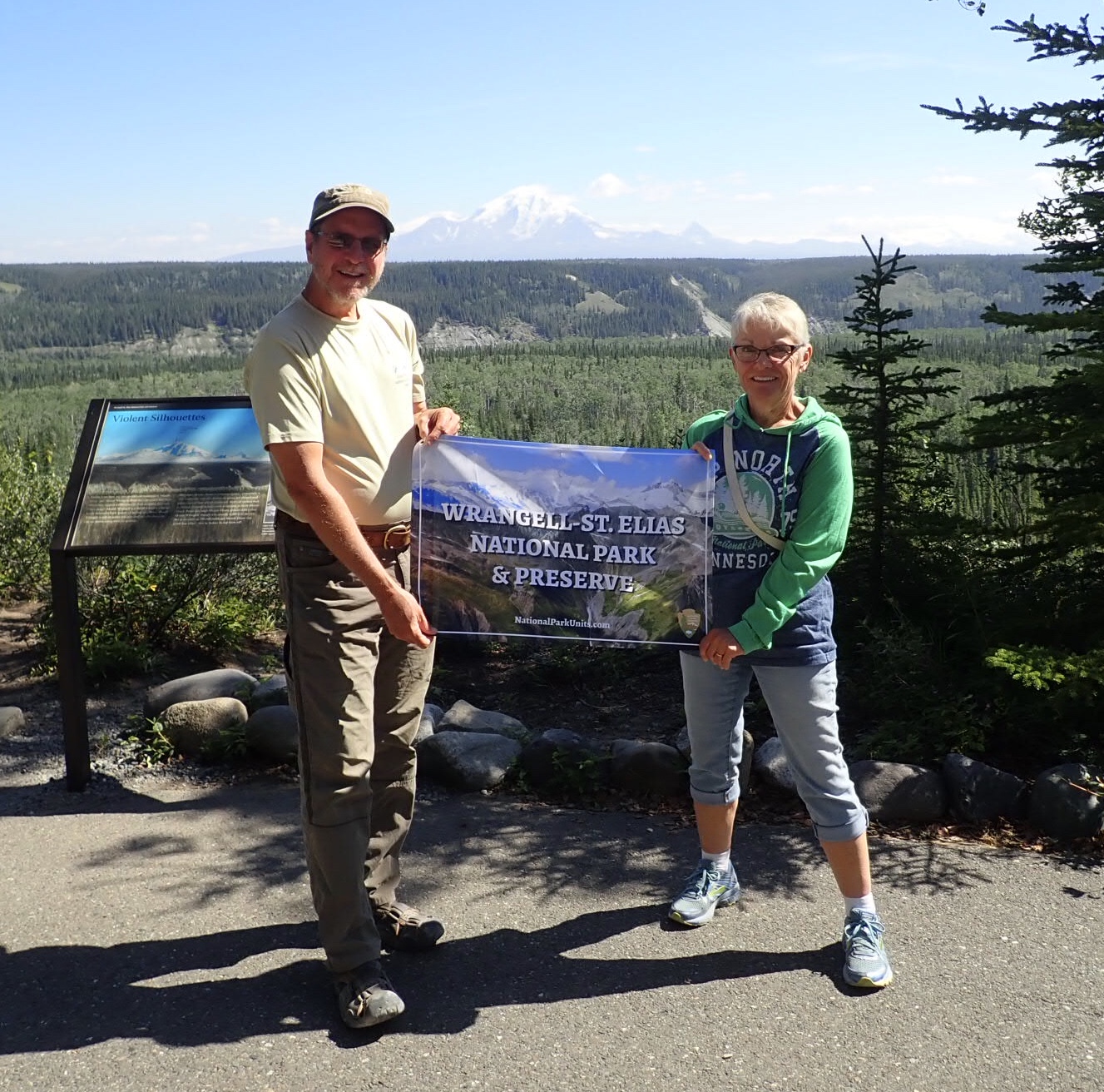
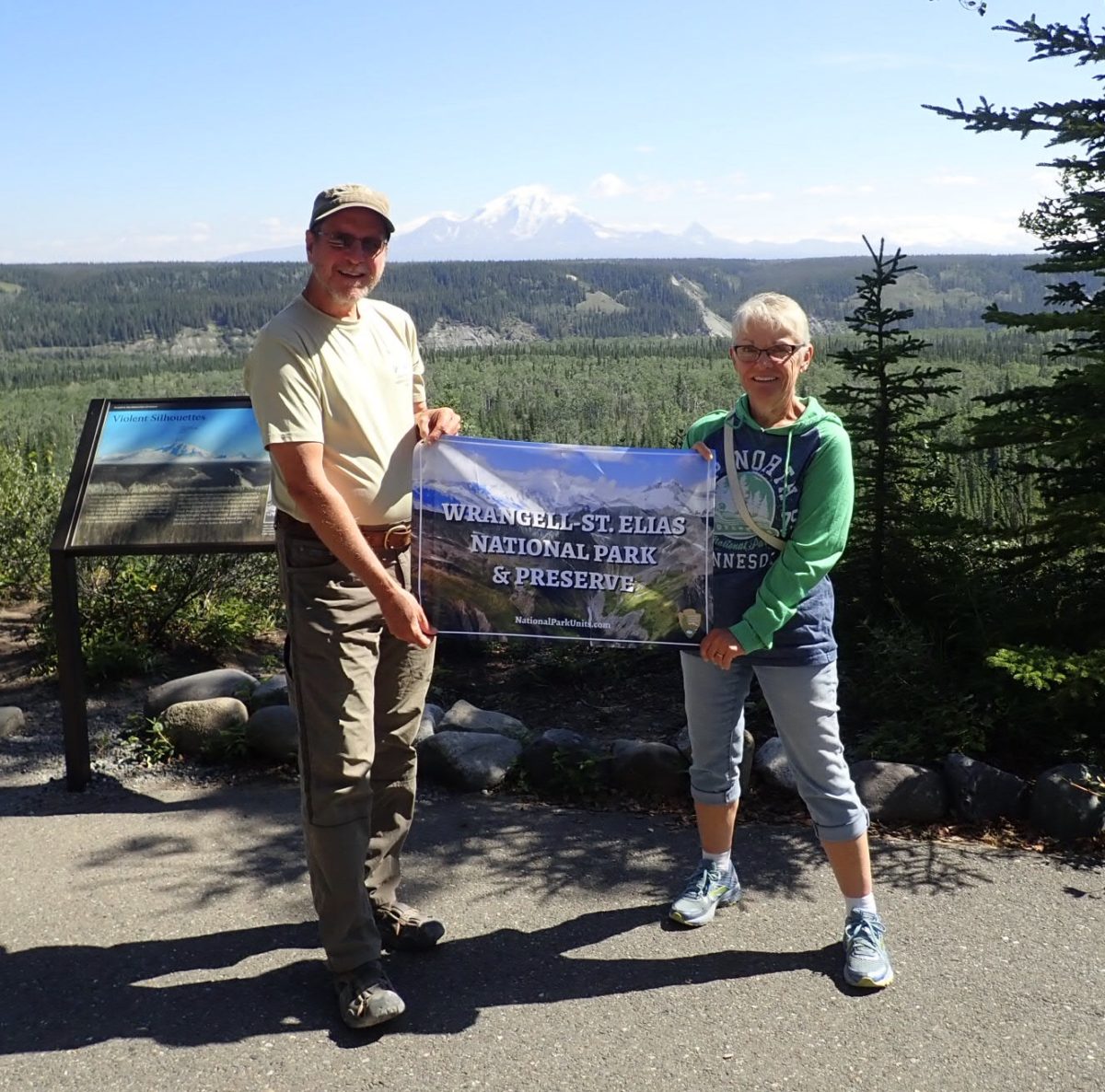
Great read! Thank you. Sounds like an amazing place!